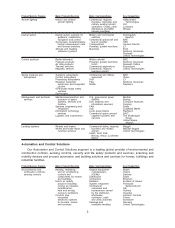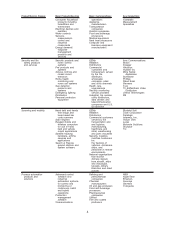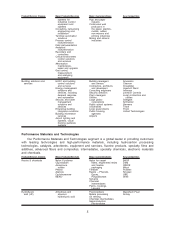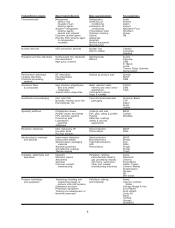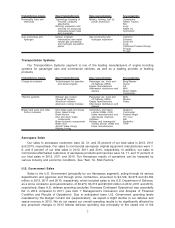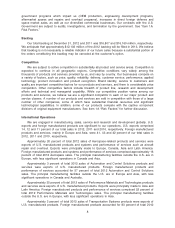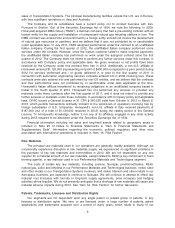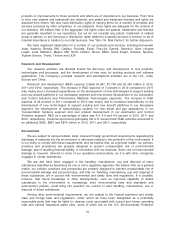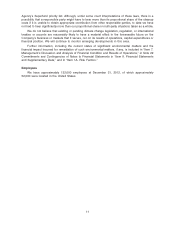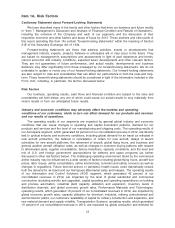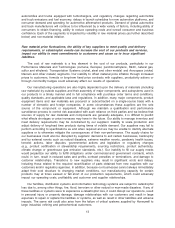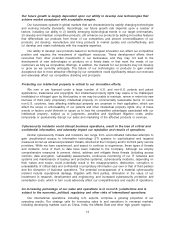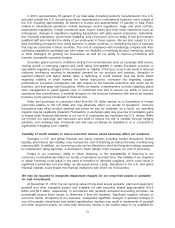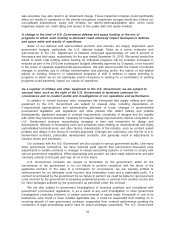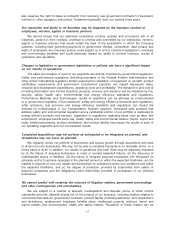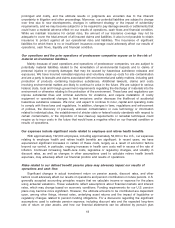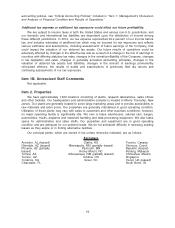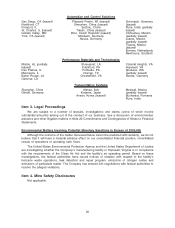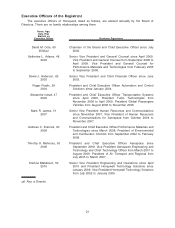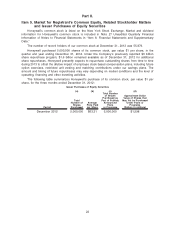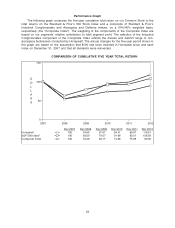Honeywell 2012 Annual Report Download - page 22
Download and view the complete annual report
Please find page 22 of the 2012 Honeywell annual report below. You can navigate through the pages in the report by either clicking on the pages listed below, or by using the keyword search tool below to find specific information within the annual report.automobiles and trucks equipped with turbochargers, and regulatory changes regarding automobile
and truck emissions and fuel economy, delays in launch schedules for new automotive platforms, and
consumer demand and spending for automotive aftermarket products. Demand of global automotive
and truck manufacturers will continue to be influenced by a wide variety of factors, including ability of
consumers to obtain financing, ability to reduce operating costs and overall consumer and business
confidence. Each of the segments is impacted by volatility in raw material prices (as further described
below) and non-material inflation.
Raw material price fluctuations, the ability of key suppliers to meet quality and delivery
requirements, or catastrophic events can increase the cost of our products and services,
impact our ability to meet commitments to customers and cause us to incur significant
liabilities.
The cost of raw materials is a key element in the cost of our products, particularly in our
Performance Materials and Technologies (cumene, fluorspar, perchloroethylene, R240, natural gas,
sulfur and ethylene), Transportation Systems (nickel, steel and other metals) and Aerospace (nickel,
titanium and other metals) segments. Our inability to offset material price inflation through increased
prices to customers, formula or long-term fixed price contracts with suppliers, productivity actions or
through commodity hedges could adversely affect our results of operations.
Our manufacturing operations are also highly dependent upon the delivery of materials (including
raw materials) by outside suppliers and their assembly of major components, and subsystems used in
our products in a timely manner and in full compliance with purchase order terms and conditions,
quality standards, and applicable laws and regulations. In addition, many major components, product
equipment items and raw materials are procured or subcontracted on a single-source basis with a
number of domestic and foreign companies; in some circumstances these suppliers are the sole
source of the component or equipment. Although we maintain a qualification and performance
surveillance process to control risk associated with such reliance on third parties and we believe that
sources of supply for raw materials and components are generally adequate, it is difficult to predict
what effects shortages or price increases may have in the future. Our ability to manage inventory and
meet delivery requirements may be constrained by our suppliers’ inability to scale production and
adjust delivery of long-lead time products during times of volatile demand. Our suppliers may fail to
perform according to specifications as and when required and we may be unable to identify alternate
suppliers or to otherwise mitigate the consequences of their non-performance. The supply chains for
our businesses could also be disrupted by suppliers’ decisions to exit certain businesses, bankruptcy
and by external events such as natural disasters, extreme weather events, pandemic health issues,
terrorist actions, labor disputes, governmental actions and legislative or regulatory changes
(e.g., product certification or stewardship requirements, sourcing restrictions, product authenticity,
climate change or greenhouse gas emission standards, etc.). Our inability to fill our supply needs
would jeopardize our ability to fulfill obligations under commercial and government contracts, which
could, in turn, result in reduced sales and profits, contract penalties or terminations, and damage to
customer relationships. Transitions to new suppliers may result in significant costs and delays,
including those related to the required recertification of parts obtained from new suppliers with our
customers and/or regulatory agencies. In addition, because our businesses cannot always immediately
adapt their cost structure to changing market conditions, our manufacturing capacity for certain
products may at times exceed or fall short of our production requirements, which could adversely
impact our operating costs, profitability and customer and supplier relationships.
Our facilities, distribution systems and information technology systems are subject to catastrophic
loss due to, among other things, fire, flood, terrorism or other natural or man-made disasters. If any of
these facilities or systems were to experience a catastrophic loss, it could disrupt our operations, result
in personal injury or property damage, damage relationships with our customers and result in large
expenses to repair or replace the facilities or systems, as well as result in other liabilities and adverse
impacts. The same risk could also arise from the failure of critical systems supplied by Honeywell to
large industrial, refining and petrochemical customers.
13


